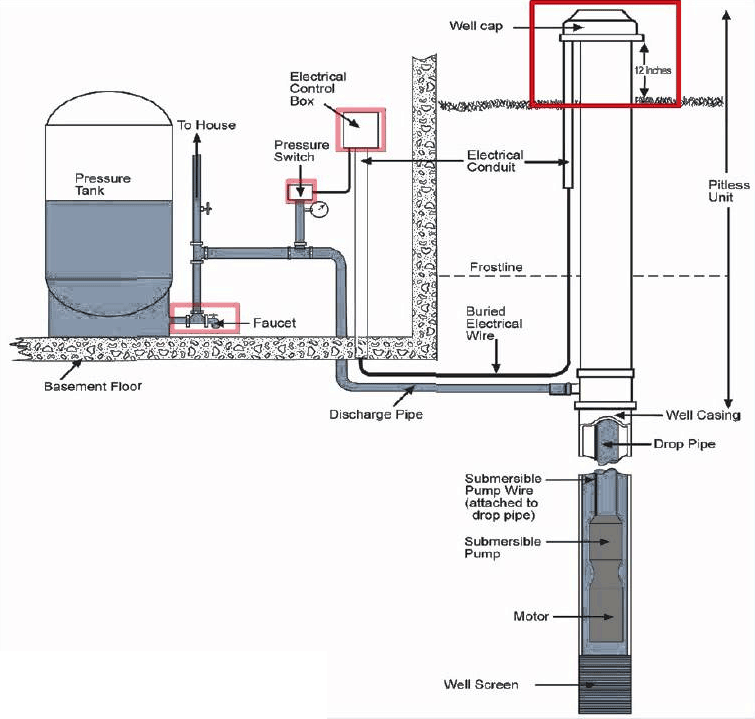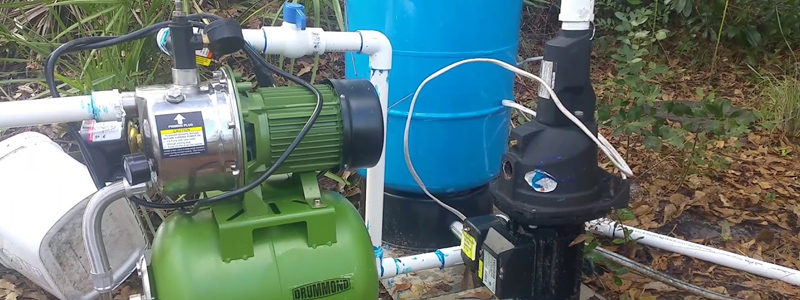Conserving money is important to every homeowner and an efficient well pump is an important component. On average, a well pump replacement costs $1559. Don’t spend that kind of money if a repair will do.
Not sure what’s wrong with your well? Keep reading for our best troubleshooting tips.

Below are a few common questions and answers about water pumps:
- My pump seems to keep cycling over and over again. Potentially, a hole in a pump pipe or a bad pump.
- My pump turns on and off frequently. A potential problem, bad tank.
- My pump is not turning off. Potentially a bad pump or hole in a pump pipe.
- Sometimes my pump works and then sometimes it doesn’t. Generally, an electrical problem.
- Why do I need to have my water tested? Whenever a new well installation is performed or upon entering a well for repair a water test is taken and is required by the Department of Natural Resources. Or, in cases of real estate transfer thru the sale of the property.
Let’s take a look at the most common well-related symptoms and what to check for.
No Water
Submersible water pumps are water pumps that can operate while fully submerged in water. Mechanical seals keep the water from entering the pump motor and causing a short circuit. Submersible pumps are used for many applications, the main purpose is to pump water from a source, such as a water well, to the desired destination.
Here are the first things to check if you have no water.
1. Do You Have Power?
If you have no water at all, the first thing to check is your power.
Has a circuit breaker tripped? If yes, that’s your problem, unless it keeps happening. If your well keeps blowing the circuit breaker, you’ll want to have it looked at.
2. Check the Pressure Switch
If you have power, but no water, check the pressure switch to make sure it’s on and working. The pressure switch is near the pressure tank, usually attached to a 1/4-inch tube.
If it’s in the on position, try smacking the tube right below the switch. If this produces a spark and the pump starts, you’ll need a pressure switch replacement. This switch starts the well water pump, and without it, there’ll be no water.
3. Check Well Water Levels
If your lack of water is due to low water levels, reduce water usage for a few days to allow the water to replenish itself. Low water levels are a common occurrence in the summer months. Your water levels will refill on their own during winter and spring.
A temporary fix is lowering your pump further into the well by adding more water pipe length at the top.
4. Mucky Water
If your water comes out looking cloudy or muddy, it’s probably because of a low water table problem. Water that is too shallow causes sand and silt to enter the pump. When this happens, the grit of the sand wears the pump out too early.
5. Spitting and Sputtering Water
If you turn on your faucet and the water spits, you have air in your lines. The air in the system either means that your pump is not working or that you have a cracked pipe somewhere. Calling a well pump repair professional to come out and pull the well is the only way to know for sure.
6. The Taste or Smell Is Off
Well water that’s contaminated with bacteria or waste from the earth above it will smell or taste different. You’ll have to get the water tested by a certified lab to make sure it’s still safe to drink.
7. Out of the Ordinary Utility Bill Costs
If you notice that your electric bill is super high, it’s likely pump-related. More than likely, the well pump is running all the time and racking up your electric bill.
Water levels, pressure switch malfunction, or pump problems can cause this. Take a look at the symptoms above to see if you can pinpoint the problem.
8. Fluctuating Water Pressure
If you’ve noticed a loss of water pressure in faucets after flushing the toilet or during a shower, it could be a broken pressure tank. The average tank stores 8 gallons of water. If the tank fails, it won’t be able to pump more than a few of those gallons out before needing to refill again.
Well Pump Repairs: What’s the Bottom Line?
Well pump issues may mean that the entire pump needs replacing, but many times a repair is all that’s necessary. Use our tips to troubleshoot the problem and decide on the next course of action. To avoid unexpected breakdowns in the future, consider having regular inspections by a plumbing professional.

